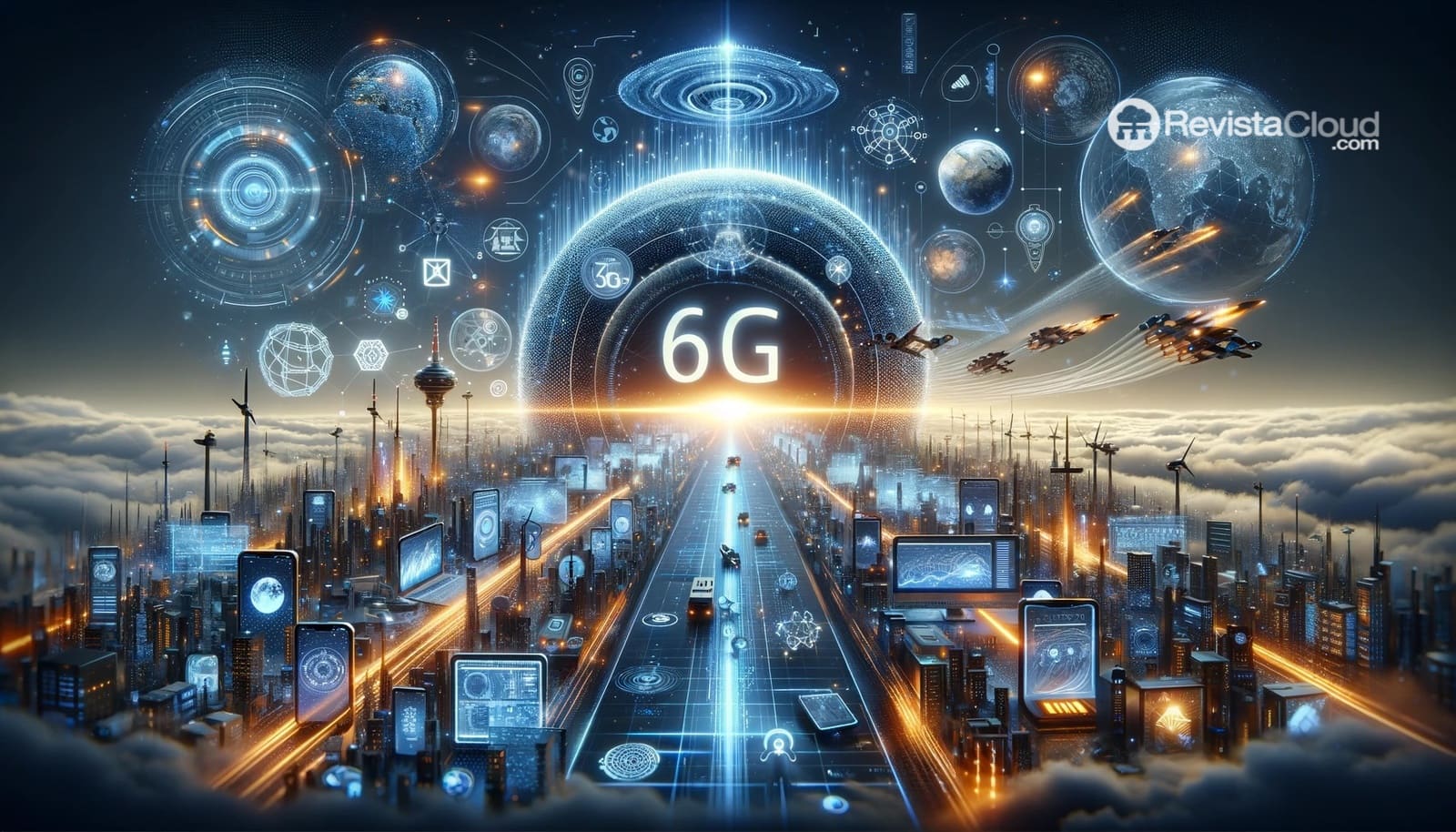The world of telecommunications is on the verge of a qualitative leap with the arrival of the sixth generation of mobile networks, known as 6G. While 5G is still being deployed globally, experts are already focusing on the possibilities offered by this new technology, which promises even higher transmission speeds and virtually zero latency.
What is 6G and how does it differ from 5G?
6G is the natural evolution of mobile networks, which have advanced from the first generation (1G) to the current fifth generation (5G). Each new generation has meant a significant increase in data transmission speed and a reduction in latency, that is, the time it takes for information to be transferred through the network.
In the case of 5G, download speeds of up to 20 Gbps and a latency of just 1 millisecond can be achieved. However, 6G promises to go much further, with maximum speeds of up to 100 Gbps and even peaks of 1 Tbps (terabit per second), as well as a latency of just 0.1 milliseconds. This will open the door to new applications and experiences that require ultra-fast connectivity and virtually real-time communication.
Strengths of 6G
One of the main promises of 6G is the arrival of the “hologram era”, where video conferencing and virtual interactions will be much more immersive and realistic, with the possibility of projecting three-dimensional images of participants. This, combined with low latency, will allow for a closer fusion between the virtual and physical world.
Additionally, 6G will further drive the development of the Internet of Things (IoT), being able to support up to 10 million devices per square kilometer. This will open up new possibilities in areas such as precision agriculture, smart city management, and autonomous driving, where real-time communication between sensors and devices will be crucial.
Artificial intelligence will also benefit from 6G, as low latency will allow for dynamically assigning the most suitable algorithms based on the context and user needs. This will result in much more personalized and immersive virtual and augmented reality experiences.
Challenges and weaknesses of 6G
While the advantages of 6G are evident, there are also some challenges and weaknesses that need to be addressed:
1. Security and privacy: The exponential increase in connected devices and the sensitivity of some applications (such as autonomous driving) will require a strong focus on cybersecurity to prevent breaches and attacks.
2. Environmental impact: The higher energy consumption and the need for more physical infrastructure (antennas, data centers, etc.) will need to be managed sustainably.
3. Interoperability and digital divide: Ensuring compatibility between old and new devices and networks will be crucial to prevent further fragmentation and digital exclusion.
4. High investment: The deployment of 6G will require significant investment in infrastructure, which could impact the cost of services for users.
5. Ethical issues: Some 6G applications, such as managing fleets of surveillance drones, raise questions about the responsible and ethical use of this technology.
Towards 7G and beyond
Although 6G is still in development and its commercialization is not expected until around 2030, talk is already shifting towards the next generation: 7G. This technology, still in an incipient phase, could have the ability to decide where computing is done, whether in the network or in the devices themselves, which would have enormous benefits for the development of home automation, artificial intelligence, robots, and other applications.
Undoubtedly, the future of mobile communications is exciting and full of possibilities. 6G and future generations promise to transform the way we connect, interact, and experience the digital world, opening up new frontiers for innovation and technological progress.
Image from AIFreeImages.

